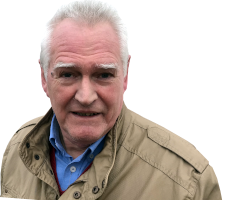search
date/time
 | North East Post A Voice of the Free Press |

Mike Tilling
Arts Correspondent
12:00 AM 1st June 2024
arts
Classical Music: Debussy & Strauss
Debussy Ariettes oubliees (arr. Brett Dean)
Strauss Vier letzte Lieder (Four Last Songs)
Siobhan Stagg (soprano)
Melbourne Symphony Orchestra
Conductor: Jaime Martin
Label: Melbourne Symphony Orchestra
Cat No: MSO0001
Released in partnership with LSO Live

I am unfamiliar with the work of soprano Siobhan Stagg, although she has sung with some of the world’s greatest orchestras. Her lyric soprano does full justice to Debussy, but she is still capable of turning on the power for Strauss. Which is not to say that Debussy is lightweight; the range and power demanded are considerable. However, Stagg has some commanding rivals for comparison, ranging from Kirsten Flagstad (who sang the first performance) to Jessye Norman, Renee Fleming, and many others.
The sequencing of the Four Last Songs has changed since their first performance in 1950. The accepted modern version sequences the Four Last Songs as follows: Im Fruhling (in Springtime); September; Beim Schlafangehen (On Going to Sleep); and Im Abendrot (at sunset). Hermann Hesse's poems inspired the first three, while Joseph von Eichendorff inspired Im Abendrot. The four are more than the sum of their parts, offering, as they do, a meditation on life and death.
Im Fruhling opens the cycle with a note of optimism. After all, it is a season of promise, although for some poets (e.g., T. S. Eliot), it is a season that promises much but delivers so little.
September is already indicating a closeness to the year and, by association, a closing to a life. In the same way that the first two songs acknowledge the cycles of nature and their connection to our lives and deaths, there is no self-pity here.
By now, we recognise that we are in a metaphorical world of endings and closings. Beim Schlafangehen needs a little further clarification. Stagg sings beautifully throughout, but Strauss chooses to include an arresting solo violin piece in this song.
Im Abendrot is the culmination of this journey to death, and Strauss sees it as a tranquil experience, like watching the sun go down and enjoying the red glow of evening. There is calm acceptance here that has something of the heroic about it.
Although they originate from the cycle Ariette Oublies (Forgotten Songs), the Debussy songs lack the same organizing principle as the Strauss. However, they too are tinged with sadness and emotion. The contrast with Strauss is not just musical; Debussy is the musings of a 24-year-old on the nature and transience of young love. Entirely at the other end of life experience.
In Il Pleur dans mon Couer (It’s Raining in My Heart), Stagg extracts the full emotional value, which she goes on to extract further in songs like Chevaux de Bois (Horse in the Woods). The speed with which the singer deals with the lyrics shows an eye for detail and an ear for language since the words come at the speed of a patter song.
The orchestrations are by Brett Dean, and, as far as I can tell, he makes the music work in the context of the full orchestra. The soprano's support is subtle and understated. Conductor Jaime Martin handles the delicacy and power required of the two cycles with a clear sense of where he wants the orchestra to go. The Melbourne Symphony Orchestra responds sympathetically.
If you want to add another version of the Four Last Songs to your collection, then this is a worthy contribution. However, if you are looking for a first purchase, I would recommend checking out the version by Renee Fleming before you buy.